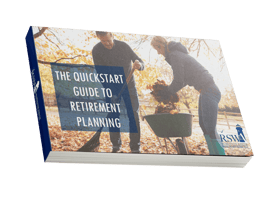The U.S. national debt stands at $34.7 trillion. Since 2000, the national debt has grown from 33.7% of the U.S. Gross National Product (GNP) to 99% of GNP. In other words, government spending has increased three times faster than the economy’s growth in the last 24 years. Peter G. Peterson Foundation Debt Clock
So, as the political campaign season heats up, the national debt and annual spending deficit will be part of the debate. But the last two presidents who are the leading candidates for the upcoming election have also helped contribute to the problem. The nonpartisan Committee for a Responsible Federal Budget has estimated the ten-year impact of the policies of the recent presidents. The impact on net new borrowing of the Trump policies is expected to be $8.4T, of which, COVID policies constitute less than half that with much of the rest coming from tax cuts. The Biden policies' net new borrowing ten-year impact is expected to be $4.3T, and, once again, less than half is due to COVID programs, with the rest coming from new spending. Between the two, COVID programs added $5.7T to the debt while other policies added $7.0 T. Committee for a Responsible Federal Budget Axios
Why is a high national debt an issue? The reasons are varied but to start, investors may demand higher interest rates for lending to a highly indebted government. While not only increasing the debt further, higher interest rates could draw money away from public markets and companies, stifling innovation and economic growth. High debt also reduces flexibility when a recession hits, as the government has little room to maneuver and create programs to help. Also, paying off debt over the decades will hamper future generations who have to pay more which could create political tension and social instability. Lastly, high debt could undermine the confidence in the U.S. dollar as the world’s reserve currency, affecting global trade and financial stability. Committee for a Responsible Federal Budget
Neither presidential candidate has made deficit spending or reducing the national debt a priority. The solution presented by President Trump is to grow out of the problem while President Biden would like to tax the wealthy. Experts are skeptical of either resolving the problem. Next year the debt ceiling will have to be raised which will bring the deficit back in the news and focus. More importantly, in 2035 Social Security will only have enough funds to pay 83% of benefits. As that date approaches some solution will have to be found. So far, rising debt has not been a problem for the U.S. economy, but at some date, it will have to be addressed. MSN CBS News
This Week’s Inflation Report: Friday morning, the PCE inflation report comes out, right about the time of this newsletter. No doubt, investors will be watching closely but the expectation is that it will be a reasonable or good number. The Cleveland Federal Reserve Bank has an Inflation Nowcasting indicator that attempts to measure inflation in real time and it is estimating the PCE reading to come in relatively flat at .07% higher than May. Cleveland Federal Reserve
Financial Planning/Investment Strategy Corner:
Artificial Intelligence and FOMO: Stories are all over the news about NVIDIA stock’s meteoric rise over the last year and a half. In Q4 2022 the stock was at about $12 per share and it now stands at approximately $125. This has led many investors to feel FOMO – fear of missing out. Some investors are trying to decide if they should buy the company now to benefit from the Artificial Intelligence (AI) boom. But investors who own index or broad-based equity funds, have owned NVIDIA within those investments all along. Therefore, they have benefited from the rise of NVIDIA and other AI companies, it’s just not as visible since it’s not held as an individual stock. Additionally, we are at the forefront of AI’s impact as most companies are only now examining how AI can help make their businesses more efficient and productive. A consulting firm, PwC, estimates that AI will add $15.7 T to the global economy by 2030. AI has had a big impact on only a few stocks so far, but as it is integrated into companies and new businesses emerge, index and broad-based investors will be participating along the way in any financial benefits that AI provides. Dimensional – AI Tide May Lift All Boats PwC
Quick Hits:
- It’s vacation season! What science tells us about having a great vacation: WSJ
- In a commencement speech, an oncologist who has been beside a thousand people as they passed, states what they wanted at that moment – to be loved or forgiven and to tell others the same: CNBC
- The benefits of and what to eat on an anti-inflammatory diet: verywellfit
- According to a recent study, protecting just an additional 1.2% of the earth will prevent the majority of animal and plant extinctions: Reuters
- Fun cocktails to try for the upcoming Fourth of July party: My Bartender
How Optimism Can Extend Your Life: A study in 2022 found that optimism was associated with a longer life and increased the chance to live beyond 90. The researchers found that optimists generally maintained better physical functioning as they aged as optimistic people are more likely to eat healthier, exercise more, and live a healthier life. Ways to help nurture optimism are to look for silver linings when confronting problems and also envision the best possible outcome. Optimism can be measured by taking the 10-question Life Orientation Test. APNews Life Orientation Test
Quote: “Perpetual optimism, is a forced multiplier.” Colin Powell
Thank you for reading RSWA Financial Advisor Insights! We welcome feedback, and please forward this to a friend! Be well, take care, and stay safe!
